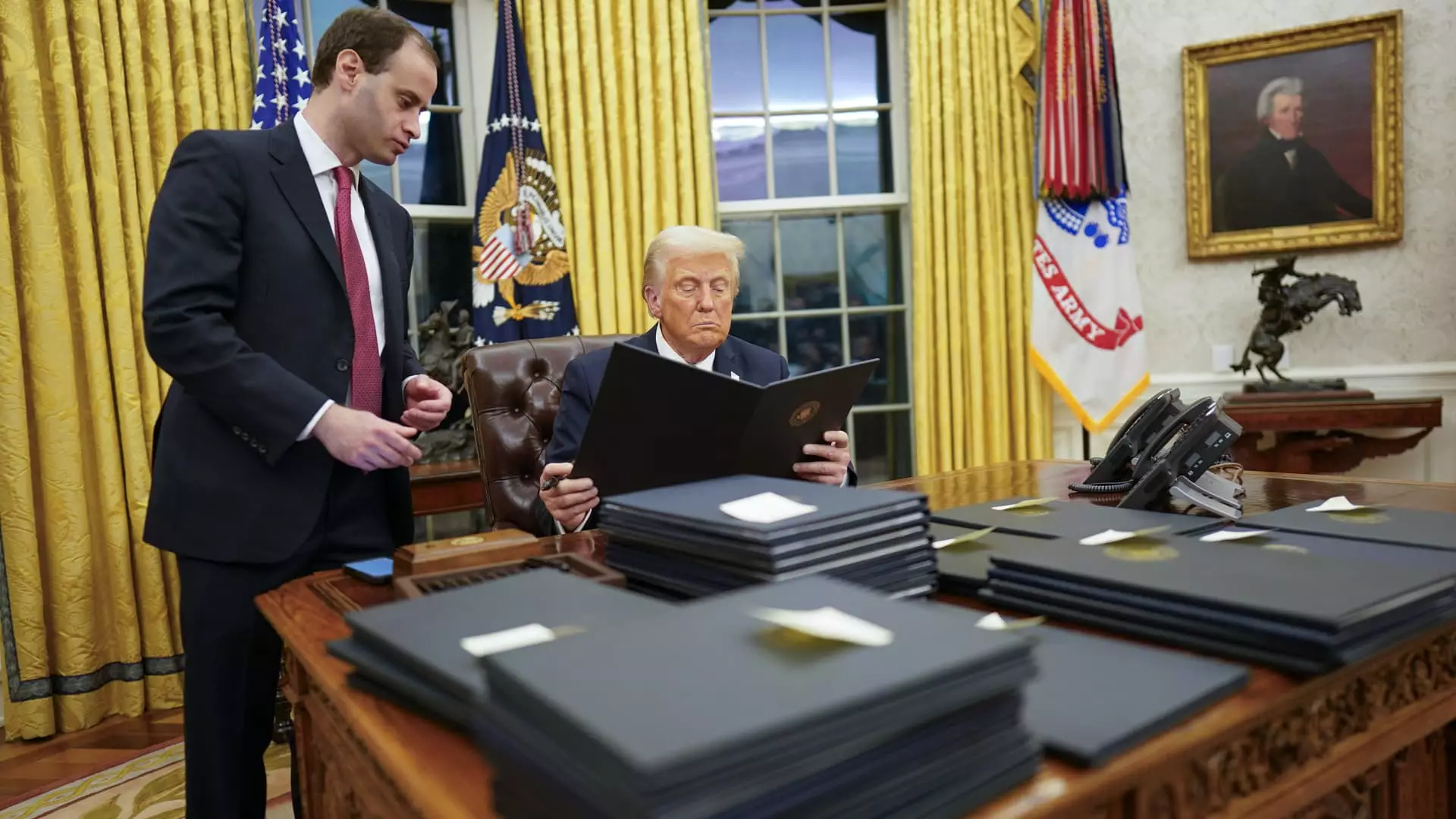The inauguration of President Donald Trump ushered in a seismic shift in U.S. energy policy, setting the stage for a contentious period of regulatory rollback and a renewed emphasis on fossil fuels. His early executive actions not only aimed to boost oil and gas production but also signaled a clear departure from prior commitments to combat climate change. This article dissects the ramifications of these actions, exploring their implications for the energy sector and the broader landscape of environmental policy in the United States.
Upon taking office, President Trump swiftly initiated an aggressive approach toward energy production. Positioning the United States as a preeminent global energy power, he employed a series of executive orders intended to dismantle many industry regulations established under previous administrations. However, his strategy reflects a paradox; while he aims to enhance fossil fuel production, industry leaders, such as the CEOs of ExxonMobil and Chevron, have indicated that oil and gas output is primarily dictated by market dynamics, which may not align with Trump’s populist rallying cry of “drill, baby, drill.”
Notably, the U.S. has maintained its status as the world’s foremost oil and gas producer in recent years. Nevertheless, the long-term impact of Trump’s directives remains uncertain. The stark contrast to President Biden’s climate policies illustrates a division not just in approach but also in philosophy. The president’s proactive stance suggests an intention to prioritize fossil fuel ventures over a progressive transition to renewable energy sources.
As part of his inaugural actions, Trump declared a national energy emergency, claiming a “precariously inadequate and intermittent energy supply” posed a threat to national security. The growing demand for electricity, particularly driven by advancements in artificial intelligence and domestic manufacturing, accentuates the urgency of his rhetoric. The PJM Interconnection, the largest grid operator in the U.S., has cautioned about potential electricity shortfalls due to the accelerated retirement of coal plants without adequate replacement.
In this context, Trump directed federal agencies to proactively utilize any lawful emergency powers to bolster domestic energy production, encompassing exploration, transportation, refining, and generation. This expansive directive underscores a strategic pivot towards prioritizing traditional energy sources while sidelining renewable initiatives, positioning the administration’s energy agenda within a national security framework.
Further epitomizing the new energy directive, Trump’s decision to withdraw from the Paris climate agreement marked a significant retreat from international climate commitments. The administration’s interpretation of this withdrawal was characterized by a rapid implementation timeline, whereby notifications to the United Nations Secretary-General would immediately set in motion the cessation of U.S. participation.
This tactical retreat from global climate agreements has drawn criticism from various environmental advocates and policymakers who fear the long-term consequences on climate change mitigations. Trump’s actions included the rescinding of ambitious goals established by the Biden administration, aiming for increased sales of electric vehicles and a carbon-free electric grid. The ramifications of this policy reversal could hinder investment in emergent technologies and clean energy markets.
Many of Trump’s energy executive orders are poised to face legal challenges, beckoning questions about the extent of executive authority in energy regulation. For instance, the rescinding of the Biden administration’s ban on oil drilling in coastal waters may be legally contested, recalling litigation tied to prior efforts to roll back protections under the Obama administration.
Moreover, Trump’s ambition to expedite the production of liquefied natural gas (LNG) in Alaska places him at odds with a growing body of public opinion and scientific consensus advocating for sustainable energy development. By prioritizing quick approvals for LNG infrastructure, the administration could overlook environmental assessments, heightening concerns from indigenous communities and environmentalists alike.
In a further deviation from established energy policies, Trump’s directive to halt federal funding under the Inflation Reduction Act, specifically targeting electric vehicle charging infrastructure, reflects a palpable disdain for renewable energy initiatives. By ordering a suspension of support for electric vehicles and wind energy projects, the administration signals a commitment to fossil fuels that could stifle innovation and development in the clean energy sector.
This multifaceted approach reveals a deeper ideological commitment to fossil fuels and presents a complicated landscape for energy policy. The ramifications of these decisions may not only affect domestic energy supply and climate goals but also influence international perceptions of U.S. commitment to combating climate change.
The initial actions taken by President Trump encapsulate a profound shift in U.S. energy policy, underscored by a prioritization of fossil fuels at the expense of progressive climate measures. The uncertainty surrounding the outcomes of these executive orders highlights the complexities involved in balancing energy production, environmental concerns, and legal frameworks. In navigating this evolving landscape, the interplay between market forces, political aspirations, and judicial oversight will be integral to shaping America’s energy future.


Leave a Reply